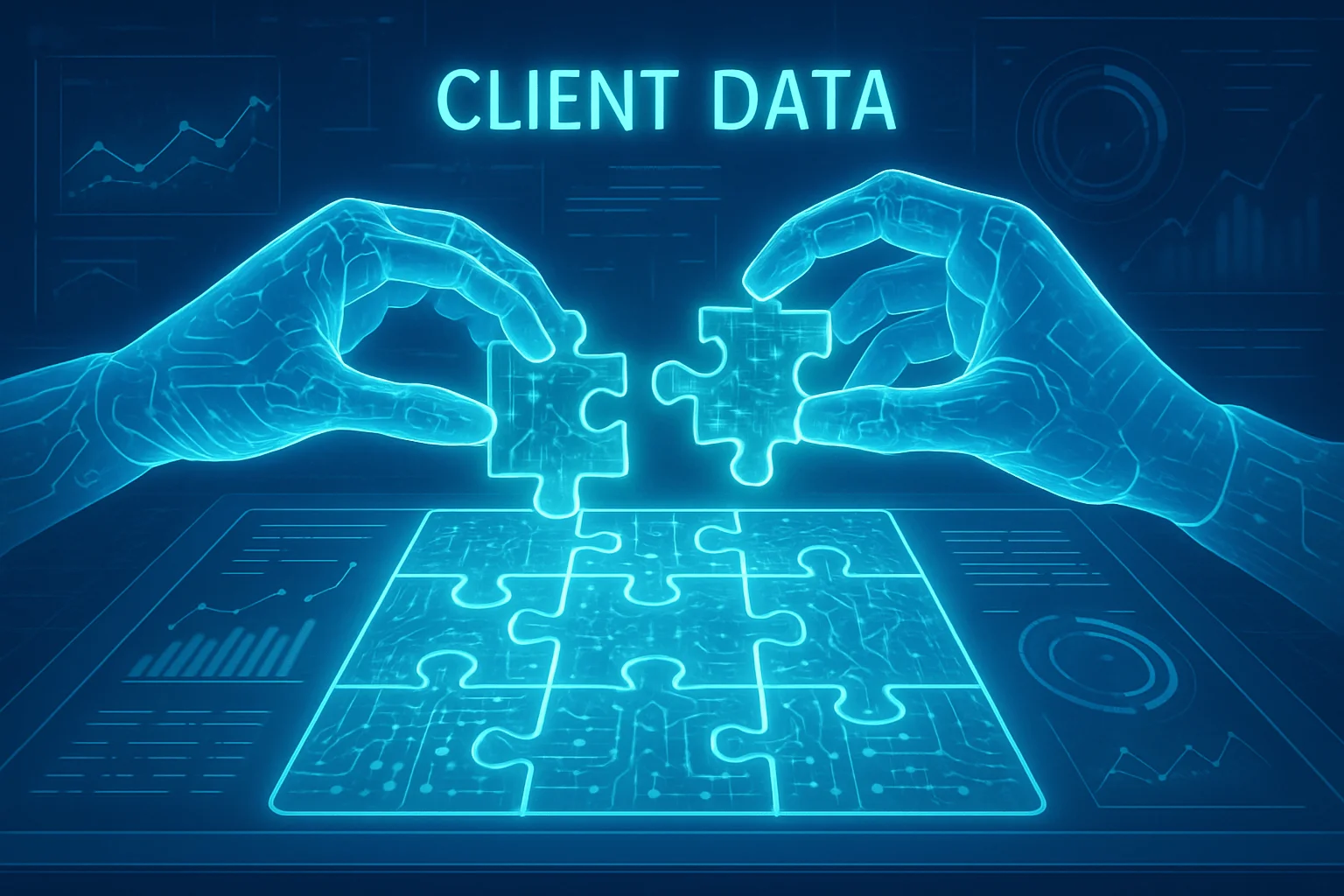Unlock Business Potential with AI Process Mining for Operational Success

Imagine uncovering a hidden roadmap within your business—one that reveals precisely where time and resources are dissipating, or where rerouting could save millions. That isn’t just a management dream; it’s the reality AI-driven process mining is quietly bringing to forward-thinking organizations. As companies grapple with mounting pressure to do more with less, the days of relying solely on manual observation or gut feelings to streamline operations are gone. Today, understanding the intricate flow of work across departments requires a new kind of clarity—one that only advanced analytics can offer.
In this article, you’ll discover how AI-powered process mining tools analyze everyday data footprints to spotlight inefficiencies, bottlenecks, and untapped opportunities hiding in plain sight. We’ll break down the essentials of this innovative technology, demonstrate its transformative business impact with real-world examples, and explore the steps leaders can take to harness its full potential. Whether you manage back-office processes or lead digital transformation, you’ll gain practical insight into leveraging data-led transparency for measurable operational gains.
Streamlining Order-to-Cash Workflows
AI-powered process mining can revolutionize the order-to-cash (O2C) cycle—a core business process spanning sales order creation, invoicing, and payment collection. Traditional bottlenecks, like manual invoice matching or approval delays, can go undetected for months, eroding cash flow and customer satisfaction. By combing through event logs from ERP, CRM, and accounting systems, AI process mining automatically visualizes the true end-to-end workflow, identifies deviations from the norm, and flags slow or redundant subprocesses. Stakeholders gain actionable insights into exactly where and why delays or errors occur, enabling rapid remediation and continuous optimization.
Benefits:
- Faster invoice cycle with fewer manual interventions
- Early detection of process deviations and compliance risks
- Automated root cause analysis of missed SLAs
- Improved cash flow and working capital management
“AI process mining turns data noise into clear signals, pinpointing precisely where orders bottleneck or payments stall, so leaders can prioritize interventions that drive revenue and efficiency.”
Mini Scenario:
A multinational manufacturing company struggled with inconsistent payment timelines from customers. Using AI process mining, they discovered that a particular region’s manual handling of returned goods was causing unexpected invoice reversals and delayed settlements. By targeting automated returns processing in that region, the business reduced average days sales outstanding (DSO) by 11% in just one quarter.
Enhancing Customer Service Response Times
Modern enterprises field thousands of service requests or support tickets daily. It’s easy for hidden bottlenecks—like ticket reassignment or inconsistent prioritization—to quietly downgrade customer experience. AI-powered process mining analyzes your customer service platforms’ event logs to map every step of request handling, from receipt to resolution. The analysis surface not only slow handoffs and workarounds, but also unintended loopbacks (tickets bounced between teams). With this granular operational visibility, management can optimize workflows, anticipate busy periods, and assign training where it delivers the highest impact.
Benefits:
- Accelerated first response and resolution times
- Insight-driven resource allocation for peak periods
- Reduced ticket backlogs and customer churn
- Objective evidence for coaching team members
“With AI mining the service desk’s digital footprints, even subtle inefficiencies emerge, enabling organizations to reimagine their support model before customers are ever disappointed.”
Mini Scenario:
A leading fintech startup noticed deteriorating support ticket closure rates but couldn’t pinpoint the cause. AI process mining revealed that nearly 18% of requests were unnecessarily escalated due to lack of first-contact resolution training. By rolling out targeted upskilling and automating common workflows, the company cut response times by 25%, boosting its net promoter score (NPS) significantly within two months.
Reducing Compliance Risks in Procurement
Regulatory requirements around sourcing, vendor payments, and approvals create complex challenges—especially in fast-growing organizations. Even with established policies, variations from the optimal process often go unnoticed until audits surface non-compliance. AI-driven process mining scrutinizes procurement logs for every purchase order, contract approval, and payment event, instantly exposing deviations, such as skipped approval steps or maverick buying. Automated alerts and dashboards highlight compliance drift, enabling procurement leaders to take corrective action before small lapses become costly violations.
Benefits:
- Continuous, real-time compliance monitoring
- Reduction in unapproved or “off-contract” spending
- Evidence-based policy refinement and training focus
- Shorter and less expensive audit cycles
“AI-driven process mining equips businesses to spot the warning signs of compliance risk early, making adherence a proactive activity rather than a reactive scramble after an audit.”
Mini Scenario:
A healthcare provider, managing hundreds of vendors, routinely faced audit penalties for inconsistent contract approval trails. After implementing AI-powered process mining, discrepancies such as unauthorized modifications and off-catalog purchases were flagged instantly. The procurement team restructured approval workflows, leading to a 40% drop in audit findings and greater overall spend control.
Optimizing Production Line Throughput
Manufacturing organizations are under continuous pressure to improve throughput while reducing downtime and waste. Despite sophisticated MES and SCADA systems, many production lines still suffer from hard-to-detect micro-stoppages, rework loops, or underutilized machinery. AI process mining extracts and analyzes shop floor event logs, time stamps, and operator actions to reconstruct the actual as-built processes. Leaders can easily see where anomalies or delays occur, measure their impact on cycle times, and simulate changes for maximum throughput.
Benefits:
- Increased overall equipment effectiveness (OEE)
- Lower rates of rework and scrap
- Proactive maintenance and resource balancing
- Data-driven production scheduling
“Revealing the unseen contours of production with AI process mining empowers manufacturers to turn minor process tweaks into major competitive advantages.”
Mini Scenario:
A high-tech electronics assembler noticed subtle inconsistencies in its yield rates but couldn’t tie them to specific shifts or machinery. AI process mining uncovered recurring five-minute delays during component handoffs between assembly and testing. By redesigning the transfer protocol and issuing automated alerts at bottlenecks, the company improved weekly line throughput by 7%—the equivalent of millions in additional annual output.
FAQs
Q1: What types of data do I need to enable AI process mining in my business?
A: Effective AI process mining requires event log data—timestamped records of business activities—from your core operational systems. This typically includes ERP, CRM, ticketing, procurement, and manufacturing systems. The richness of insights improves with more granular data, such as user actions, approvals, status changes, and system messages. Most modern process mining tools can aggregate and standardize data from multiple sources and formats via built-in connectors and APIs, minimizing preparation overhead.
Q2: How does AI process mining differ from traditional business process management (BPM) or manual mapping?
A: While traditional BPM relies on static modeling and stakeholder interviews, AI process mining analyzes real system data to reconstruct the true process flow—including all actual variations and exceptions. This removes subjectivity and reveals the “as-is” state, not just the “to-be” design. AI adds further value by automatically detecting patterns, anomalies, and predicting impacts, offering actionable insights far beyond manual methods. The result: faster, ongoing improvement cycles rooted in factual behavior, not assumptions.
Q3: Can AI process mining scale for enterprises with global, multi-site operations?
A: Absolutely. Modern AI process mining platforms are designed for scalability, ingesting data from hundreds of systems across countries and business units. Advanced aggregation, filtering, and user access controls let organizations analyze global, regional, or site-specific processes. AI-driven analytics can normalize cross-site variations, flag outliers, and benchmark performance—all while maintaining data security and privacy compliance, ensuring even complex enterprises gain real operational clarity.
Key Takeaways
- AI process mining transforms passive business data into a living map of critical workflows, illuminating inefficiencies and opportunities invisible to manual process reviews.
- By uncovering process deviations in real-time, organizations can iterate and optimize without waiting for annual audits or customer complaints.
- AI-powered visualizations break down organizational silos, fostering collaboration between departments with shared, data-backed evidence of improvement areas.
- Continuous monitoring through AI process mining reduces reliance on crisis-based interventions and enables a culture of proactive operational excellence.
- Granular process insights facilitate targeted upskilling and automation investment, maximizing return and minimizing trial-and-error waste.
- AI process mining not only identifies what happens in your processes, but also uncovers the underlying why—supporting strategic, not just tactical, decision making.
- The true value of AI process mining lies not just in eliminating inefficiency, but in revealing new capabilities and revenue opportunities within your existing operations. ---
Accelerating Digital Transformation Initiatives
AI process mining is a force multiplier for digital transformation, providing clarity and momentum at every step of modernization. Many organizations embark on transformation journeys—ERP migrations, workflow automation, or customer experience redesigns—without a clear picture of their current-state processes. This lack of transparency often leads to costly surprises, change fatigue, and missed business goals. AI-driven process mining forensically reconstructs actual end-to-end operations, delivering a factual foundation upon which to prioritize, design, and track transformation progress.
By continuously monitoring process KPIs before, during, and after transformation initiatives, teams can measure real impact, rapidly identify adoption barriers, and pivot strategies when value isn’t materializing as expected. This actionable feedback loop ensures investments deliver the intended operational agility, efficiency, and resilience.
Benefits:
- Baseline and benchmark process performance pre- and post-transformation
- Evidence-driven transformation roadmaps and prioritization
- Early detection of value leakage or slow user adoption
- Greater stakeholder buy-in through transparent, data-backed reporting
“With AI process mining, digital transformation shifts from a leap of faith to a guided journey, mapped by concrete evidence and adaptable in real time.”
Mini Scenario:
A large logistics provider embarked on automating its freight scheduling. By applying AI process mining, the company mapped schedule creation, load assignments, and exception handling as they truly occurred—not just as documented. Early analysis revealed manual workarounds persisting even after automation rollout. By re-aligning training and tweaking digital workflows, the transformation team captured 40% more automation benefit than initially projected, and achieved payback within the first year.
Supporting Continuous Improvement and Lean Initiatives
Lean and continuous improvement (CI) programs thrive on visibility into process waste and variation. Traditional methods—value stream mapping, workshops, and time studies—are labor-intensive and provide only snapshots. AI process mining, on the other hand, delivers ongoing, unbiased measurement of all workflow executions. Leaders can spot process waste (over-processing, waiting, motion, defects) automatically, quantify improvement opportunities, and validate the impact of interventions with real-time data.
Crucially, AI process mining supports not just large-scale CI projects, but also daily incremental improvements driven by frontline teams. Instead of anecdotal issues and best guesses, CI leaders can routinely target the biggest sources of inefficiency, track progress with objective metrics, and sustain gains.
Benefits:
- Real-time identification and measurement of process waste
- Data-driven prioritization of Kaizen events or Six Sigma projects
- Continuous validation of improvement actions
- Increased frontline engagement through visible, rapid results
“What once took weeks of observation and debate can now be discovered and addressed in hours—AI process mining turbocharges Lean at every level.”
Mini Scenario:
A global food producer used AI process mining to reduce changeover times between product runs in its bottling facility. By tracking every step of the changeover process, they identified non-standard activities that consistently added avoidable downtime. Standardizing best practices, supported by real-time feedback loops, cut changeover times by 28%, unlocking additional production capacity without new capital spend.
Enabling Agile Mergers, Acquisitions, and Integrations
Mergers, acquisitions, and business integrations require harmonizing a patchwork of processes, systems, and cultures. Hidden process variants can derail synergy targets and integration deadlines. AI process mining enables integration teams to rapidly map the actual-as-is processes of both organizations across sales, supply chain, finance, and customer service. Differences, redundancies, and inefficiencies surface objectively—helping leaders merge best practices, standardize critical workflows, and avoid costly missteps.
This systematic, data-driven approach de-risks integration, accelerates alignment, and unlocks intended deal value far faster than manual mapping or interviews could achieve.
Benefits:
- Rapid, factual mapping of multi-organization process landscapes
- Early identification of integration pain points and win-win harmonization
- Reduced post-merger disruption and culture clash
- Faster realization of synergy and growth targets
“AI process mining brings integration clarity—showing not just how things are supposed to work, but exactly how they do work, company by company.”
Mini Scenario:
During a major merger between two retail chains, AI process mining revealed duplicate inventory management approval loops and conflicting discount authorization processes. The integration team used these insights to streamline joint operations, eliminating non-value-adding steps and aligning roles—trimming a projected 15 months from their combined systems integration timeline.
Final Thoughts
AI-powered process mining is redefining how organizations see, manage, and improve their operations. By providing a precise, dynamic X-ray of business workflows, it moves improvement initiatives from guesswork to science—fostering enterprise agility, compliance, and customer satisfaction in even the most complex environments.
Early adopters report not just incremental gains, but new levels of business insight, resilience, and transformation readiness. As competition tightens and operational complexity grows, embedding AI process mining isn’t just an advantage—it’s rapidly becoming a necessity for sustainable performance and innovation.
Ready to illuminate your enterprise’s hidden process opportunities? Start with a pilot in a high-impact area, partner with your IT and process excellence teams, and let AI process mining show you the facts. From there, the journey to operational excellence and competitive advantage unfolds with clarity. ---
Building a Data-Driven Culture for Sustainable Excellence
The transformational impact of AI process mining doesn’t stop with operational improvements—it catalyzes a cultural shift toward data-driven decision making at every organizational level. As teams gain daily access to real-time, actionable insights, reliance on instinct or anecdote fades, replaced by a shared understanding of how work truly happens. Continuous process transparency fosters cross-functional trust, encourages collaborative problem-solving, and accelerates innovation cycles.
Leaders who embed AI process mining into their management cadence empower employees to identify inefficiencies proactively, own process metrics, and contribute to measurable improvement. Over time, this normalizes a Lean mindset, where everyone—from finance to frontline operations—recognizes their role in driving performance.
Benefits:
- Unified data language across business and technical teams
- Faster, consensus-driven root cause analysis and solution design
- Heightened accountability and engagement in process improvement
- Democratization of insights, unlocking creativity organization-wide
“When the real process story is visible to all, change becomes everyone’s business, not just the domain of experts or executives. AI process mining democratizes operational excellence.”
Mini Scenario:
An insurance provider sought to reduce claims processing time. By rolling out AI process mining dashboards to both claims handlers and executives, the company sparked bottom-up ideas—frontline staff suggested queue balancing techniques that trimmed a further 18% from average processing times. The resulting culture of transparency and shared success boosted morale and unlocked further cycles of improvement.
Best Practices for Successful Implementation
To maximize the value and adoption of AI process mining, organizations should follow a structured approach. Early wins build confidence and momentum, while thoughtful change management minimizes disruption. Consider these key tips:
-
Start with Clear Objectives: Define what you want to achieve—cycle time reduction, compliance, cost savings, etc.—and select well-defined, high-impact processes for initial pilots.
-
Ensure Data Readiness: Collaborate with IT to identify, extract, and standardize event logs from key systems. Data quality and completeness underpin reliable insights.
-
Engage Stakeholders Early: Involve process owners, end-users, and executive sponsors from the outset. Shared buy-in accelerates adoption and ensures insights are acted upon.
-
Invest in Training & Enablement: Provide education on how to interpret process mining outputs and integrate findings into daily operations. Empower continuous learning.
-
Build for Scale: After early pilots, plan for broader rollout—establish governance, prioritize processes by business value, and automate monitoring and reporting where possible.
-
Act on Insights: The true value lies in action. Rapidly experiment with improvement ideas, measure impact, and iterate.
“AI process mining delivers the clearest sightline in digital operations, but its power comes alive when organizations move from insight to decisive, sustained action.”
Looking Ahead: The Future of AI-Powered Process Mining
AI process mining is rapidly evolving, fueled by advances in machine learning, natural language processing, and integration with automation technologies. As these tools become smarter and more intuitive, several exciting trends are shaping the future:
-
Predictive & Prescriptive Analytics: Beyond identifying what went wrong, AI models will increasingly forecast where delays or compliance risks are likely—suggesting proactive interventions before issues arise.
-
Hyperautomation Integration: Seamlessly linking process mining insights to robotic process automation (RPA) and workflow engines will enable closed-loop, self-optimizing processes.
-
Conversational Interfaces: Natural language querying and voice-driven dashboards will make process intelligence accessible to every employee—not just analytics teams.
-
Industry-Specific Benchmarking: AI process mining will draw on external data to benchmark processes against industry peers, guiding organizations to truly world-class performance.
These advances mean that what is now a powerful differentiator will soon be a foundational capability for organizations seeking to compete—and thrive—in a digital, data-driven world.
Take the Next Step:
Whether you’re seeking operational gains, compliance certainty, or a transformation catalyst, AI process mining delivers a powerful foundation. Start with curiosity, lead with data, and make process excellence a core part of your company’s DNA.
Ready to see the invisible? Illuminate your operational reality today—and unlock the full promise of digital transformation.
To succeed in today’s fast-paced business world, organizations must look beyond surface-level improvements and truly understand the intricate flows of their operations. As we’ve explored, AI-powered process mining offers a powerful, data-driven lens for pinpointing inefficiencies, reducing costs, and fortifying compliance—all while driving innovation. By embracing these insights, you position your business to stay agile and competitive, ready to adapt as challenges and opportunities arise. Now is the perfect moment to reflect on how this technology could reshape your own processes. Are you ready to uncover the hidden potential in your operations? Share your thoughts, join the discussion below, or subscribe for more strategies to fuel your success. But the journey toward operational excellence does not end with technology adoption alone. To truly capture the benefits of AI-powered process mining, organizations must foster a culture of continuous improvement and cross-functional collaboration. This means empowering teams at every level to question existing workflows, share observations, and contribute ideas for optimization. Transparent communication between departments—supported by real-time analytics—enables stakeholders to swiftly identify bottlenecks and initiate targeted interventions.
Moreover, as process mining solutions become increasingly sophisticated, businesses should not shy away from customizing these tools to align with their unique needs and objectives. Leveraging advanced features such as predictive analytics, automated root cause analysis, and scenario modeling can help you move from reactive problem-solving to proactive decision-making. With these capabilities, leaders can anticipate disruptions, model the impact of potential changes, and prioritize initiatives that offer the greatest ROI.
Of course, data integrity and security remain paramount in this transformation. Ensuring robust data governance and maintaining compliance with relevant regulations should be integral to your process mining strategy. This not only safeguards sensitive information but also reinforces stakeholder trust, paving the way for wider adoption and long-term success.
Ultimately, the potential of AI-powered process mining extends far beyond operational tweaks. It inspires a shift in mindset—from seeing processes as fixed sequences to viewing them as dynamic systems that can evolve and adapt. As you embark on this journey, remember: the real competitive advantage lies in your organization’s ability to learn, iterate, and grow.
What next steps are you considering to drive meaningful change in your operations? Explore additional resources, connect with industry peers, or consult with experts to chart your path forward. Your transformation begins with a single, informed decision—make it count.



